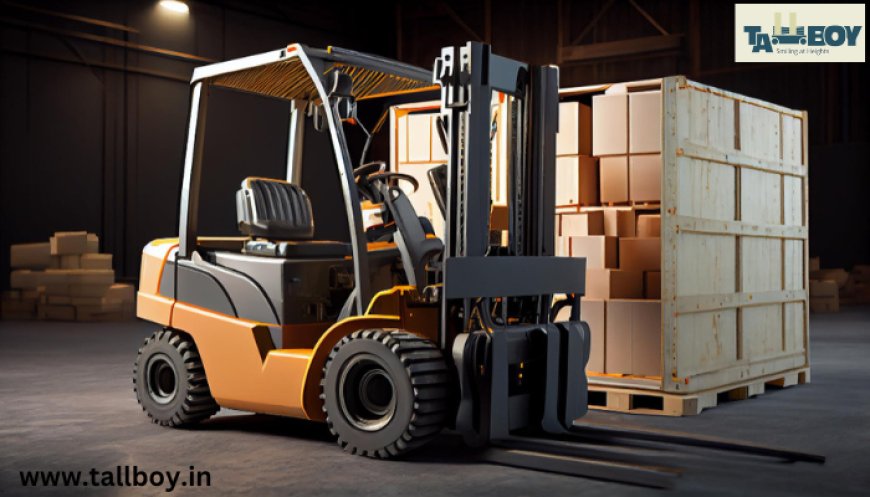The Ultimate Guide to Scissor Lifts: Types, Uses, and Pricing
Scissor lifts are essential equipment in various industries, providing safe and efficient access to elevated work areas. Whether you need a scissor lift machine for construction, maintenance,

Scissor lifts are essential equipment in various industries, providing safe and efficient access to elevated work areas. Whether you need a scissor lift machine for construction, maintenance, or warehouse operations, understanding its features and pricing is crucial. In this guide, we will explore different types of scissor lifts, including scissor lifts for trucks, aerial and scissor lifts, and scissor boom lifts, while also discussing their pricing and key considerations for buyers.
What is a Scissor Lift?
A scissor lift machine is a type of aerial work platform designed to lift workers and materials to elevated heights. Unlike traditional ladders or scaffolding, scissor lifts offer stability and a larger work area, enhancing both safety and efficiency. The lifting mechanism consists of crisscrossing supports that expand and contract like a scissor, hence the name.
Types of Scissor Lifts
1. Scissor Lift for Trucks
A scissor lift for trucks is a specialized lift designed for loading and unloading heavy materials. These lifts are often mounted on vehicles, making them ideal for logistics, construction, and industrial applications. Truck-mounted scissor lifts offer mobility and versatility, allowing workers to transport loads easily while maintaining safety.
2. Scissor Lift Machine
A standard scissor lift machine is used for a variety of tasks, including maintenance, construction, and warehouse management. These lifts come in electric and hydraulic models, each offering specific advantages. Electric scissor lifts are ideal for indoor use due to their low noise levels and zero emissions, while hydraulic models provide superior lifting power for outdoor applications.
3. Aerial and Scissor Lifts
Aerial and scissor lifts refer to a broader category of elevated work platforms, including both vertical and articulating lifts. Scissor lifts are best suited for vertical lifting, while aerial lifts, such as boom lifts, offer extended reach capabilities. These lifts are commonly used in facility maintenance, window cleaning, and high-ceiling repairs.
4. Scissor Boom Lift
A scissor boom lift combines the stability of a scissor lift with the flexibility of a boom arm. This type of lift allows workers to access difficult-to-reach areas while maintaining a stable platform. It is widely used in construction sites, oil refineries, and bridge maintenance projects.
Key Uses of Scissor Lifts
Scissor lifts are used in various industries for multiple purposes, including:
-
Construction – Ideal for reaching elevated workspaces safely.
-
Warehousing – Helps in stacking and retrieving goods efficiently.
-
Maintenance – Used for repairs in factories, stadiums, and commercial buildings.
-
Logistics – Essential for loading and unloading heavy materials.
-
Events & Entertainment – Commonly used in setting up lighting and stage equipment.
Scissor Lift Pricing
The cost of a scissor lift depends on several factors, including size, weight capacity, power source, and additional features. Here is a general breakdown of scissor lift pricing:
-
Small Electric Scissor Lifts (10-20 ft.): $5,000 - $12,000
-
Mid-Range Scissor Lifts (20-40 ft.): $12,000 - $25,000
-
Large Industrial Scissor Lifts (40+ ft.): $25,000 - $50,000+
-
Truck-Mounted Scissor Lifts: $15,000 - $60,000
-
Scissor Boom Lifts: $20,000 - $80,000
In addition to the purchase price, buyers should also consider rental options. Renting a scissor lift can range from $100 to $500 per day, depending on the model and location.
Factors to Consider When Buying a Scissor Lift
1. Weight Capacity
Ensure that the scissor lift you choose can support the required load. Overloading can lead to equipment failure and safety risks.
2. Height Requirements
Determine the maximum height you need to reach. Different models offer varying lift heights, so choose one that fits your specific needs.
3. Power Source
-
Electric models: Best for indoor use, as they are quieter and emission-free.
-
Hydraulic models: Suitable for outdoor work with rough terrain capabilities.
-
Diesel models: Offer greater power but produce emissions, making them ideal for outdoor applications.
4. Mobility and Storage
Consider whether you need a mobile lift, such as a scissor lift for trucks, or a stationary model. Also, check if you have adequate space for storing the equipment when not in use.
5. Safety Features
Look for essential safety features, such as emergency stop buttons, guardrails, and automatic braking systems, to ensure worker safety.
Conclusion
Scissor lifts are invaluable tools for various industries, offering safe and efficient solutions for working at heights. Whether you need a scissor lift machine for construction, a scissor lift for trucks for logistics, or an aerial and scissor lift for maintenance, choosing the right model is essential. By considering factors such as height, weight capacity, and power source, you can find a scissor lift that meets your needs while staying within your budget. With a clear understanding of scissor lift pricing, you can make an informed decision whether to buy or rent, ensuring maximum productivity and safety in your operations.

What's Your Reaction?
























